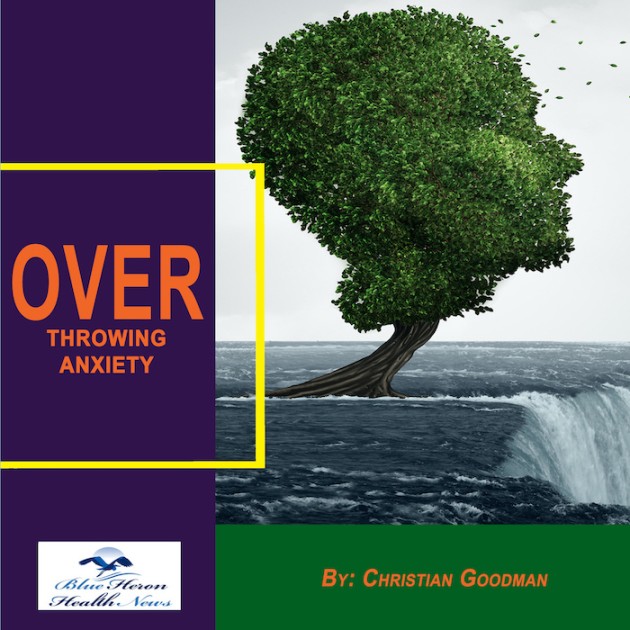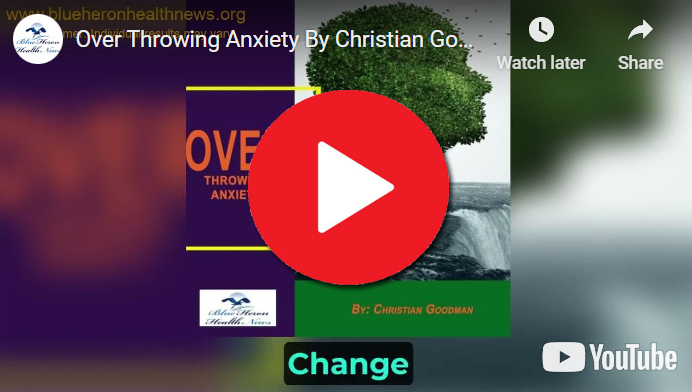
Overthrowing Anxiety™ This eBook includes a complete program to treat anxiety effectively. It guides you to learn the ways to find, understand, and accept the main cause of your anxiety and start using the techniques provided in it to treat the problem.
How can one differentiate between a migraine and a cluster headache?
It is important to differentiate between a migraine headache and a cluster headache since they are both severe types of primary headaches but with distinct differences in their symptoms, causative factors, and treatments. The following is a list of their significant differences:
???? 1. Pain Location
Migraine:
Often unilateral (one side of the head), but occasionally both sides.
May be felt in temples, forehead, or on the back of the eyes.
Cluster Headache:
Always unilateral (one side), most often around or behind the eye or temple.
More localized to the orbital or periorbital region (eye socket region).
???? 2. Pain Severity
Migraine:
Most often characterized as a pulsating or throbbing quality.
Can be moderate to severe in severity, and pain can worsen with movement or activity.
Cluster Headache
The headache is stabbing, burning, or shooting and typically defined as the worst headache pain conceivable.
Pain is worse, typically a 10/10 in intensity.
???? 3. Duration of Headache
Migraine:
Can last 4 hours to 72 hours (1–3 days), occasionally with partial relief between attacks.
Can have an early warning or prodrome phase or an aura phase (visual disturbance).
Cluster Headache
Duration of pain is 15 minutes to 3 hours and is predominantly in cycles.
Each cycle (or “cluster period”) lasts weeks to months, with headache-free periods in between.
???? 4. Attack Frequency
Migraine:
Can be weekly or monthly and can be triggered by some factors such as stress, some foods, or some hormonal fluctuations.
Cluster Headache:
Is in clusters and with multiple attacks per day (often 1–3 per day).
Each cluster period can last weeks to months, but the attacks usually completely vanish between clusters.
???? 5. Associated symptoms
Migraine:
Had nausea, vomiting, and light (photophobia) or noise (phonophobia) sensitivity.
May have visual disturbance (aura), i.e., seeing flashing lights or zigzag lines.
Can be triggered or worsened by exercise, bright light, or pungent odors.
Cluster Headache:
Associated with intense pain with autonomic symptoms:
Red, watery eye on the affected side.
Nasal congestion or rhinorrhea on the same side as the headache.
Ptosis or miosis.
Restlessness or agitation; most individuals walk with a cluster attack because of severe pain.
???? 6. Timing of Attacks
Migraine:
May occur at any time of day, but has a tendency to start in the morning.
May be provoked by hormonal fluctuation, food, stress, or environmental change.
Cluster Headache:
Occurs at night, typically wakes the person up from sleep, and has a tendency to occur at the same time every day during a cluster period.
Attacks also tend to happen more often in the spring or autumn.
???? 7. Response to Medication
Migraine:
Is responsive to medications like triptans (e.g., sumatriptan), NSAIDs (e.g., ibuprofen), and anti-nausea medication.
Preventive therapy may include beta-blockers, anticonvulsants, or antidepressants.
Cluster Headache:
Reposes to oxygen therapy (inhaling 100% oxygen for 15 minutes), sumatriptan (nasal spray or injection), or intranasal lidocaine.
Preventive treatment includes verapamil, steroid therapy, or lithium for periods of clusters.
???? Summary Table
Feature Migraine Cluster Headache
Pain Location Unilateral (temples, forehead, etc.) Unilateral (near the eye)
Pain Type Throbbing or pulsating Sharp, burning, piercing
Duration 4 hours to 72 hours 15 minutes to 3 hours
Frequency Weekly to monthly 1-3 times daily (in clusters)
Associated Symptoms Nausea, vomiting, photophobia, aura Red/watery eye, nasal congestion, ptosis
Timing
Can happen at any time
Mostly at night
Response to Medication
Triptans, NSAIDs, anti-nausea
Oxygen treatment, sumatriptan
Conclusion:
Migraine: Often has nausea, light sensitivity, and more prolonged duration. Pain is throbbing and can last for hours to days.
Cluster Headache: Intense, piercing pain around the eye, typically with associated autonomic symptoms like watery eyes, runny nose, or drooping eyelids. Attacks are short but intense, occurring in clusters over weeks.
If you are not certain of the type of headache you have, it is important to see a healthcare professional or a neurologist to provide accurate diagnosis and treatment. Do you want suggestions on how to treat each condition well?
Feverfew (Tanacetum parthenium) is a traditional herbal remedy utilized to prevent and treat migraines. Feverfew contains compounds like parthenolide, which have been claimed to be anti-inflammatory and neuroprotective with the ability to reduce the frequency and severity of migraines.
Benefits of Feverfew for Migraine Prevention
1. Anti-inflammatory
Feverfew is blessed with remarkable anti-inflammatory activities that can reduce the neurogenic inflammation cited to be involved in the development of migraines.
By inhibiting the release of pro-inflammatory prostaglandins and cytokines, feverfew may be able to prevent the onset of migraine attacks.
2. Reduces Frequency and Severity of Migraine
Different studies have shown that feverfew can reduce the frequency, severity, and duration of migraines.
In clinical trials, feverfew patients had fewer migraine days and less intense pain.
3. Relieves Symptoms of Migraine
Feverfew may alleviate some of the symptoms of migraine such as nausea, vomiting, and light sensitivity (photophobia), but it is employed more for prevention than for alleviation of acute symptoms.
4. Vascular Effects
Feverfew is believed to exert effects on serotonin and vascular tone, which can inhibit the blood vessel constriction and dilation that causes migraines.
It can stabilize the blood vessels, preventing the vascular changes that typically happen with a migraine attack.
5. Safe for Long-Term Use
Unlike some drugs that have long-term side effects, feverfew is generally safe to use continuously as a preventive drug.
It carries less risk of dependence or withdrawal symptoms compared to some pharmaceutical preventatives for migraines.
How to Use Feverfew for Migraine Prevention
Standard dose: Typically, a daily dosage of 50-150 mg of feverfew extract (containing 0.2% parthenolide) is recommended for preventing migraine.
Most commonly used is fresh feverfew leaves (frequently chewed) or capsules, but dry leaves or tinctures may also be obtained.
Duration: It may be 4–6 weeks or so before benefits are experienced, and regular administration must be maintained.
Side Effects and Considerations
Mild side effects: Some people may experience mouth ulcers, gastrointestinal upset, or allergic reactions (especially if allergic to plants in the daisy family, such as ragweed, marigolds, or daisies).
Pregnancy and breastfeeding: Feverfew should be avoided during pregnancy due to potential risks of uterine contractions and possible miscarriage.
Drug interactions: Feverfew may interact with blood thinners (e.g., warfarin) and certain anti-inflammatory medications, and thus consulting a healthcare practitioner before use is recommended.
Evidence and Effectiveness
Evidence supporting feverfew’s efficacy is inconsistent, with some trials showing it to reduce migraine frequency by about 24%, while others have had more modest outcomes. Still, it remains one of the more popular herbal treatments for migraine prophylaxis.
The drug is usually prescribed as an adjuvant to other treatments for migraine, especially for those patients who prefer natural products.
Summary
Feverfew holds promise for migraine prevention through its reduction of inflammation, stabilizing effect on blood vessels, and reduction of frequency and severity of attacks. It’s a natural, safe alternative, particularly for those who don’t like to take medications. Nevertheless, as with all herbal supplements, it’s advisable to talk with a healthcare provider before taking feverfew, particularly to avoid interaction with other medications.
Would you like more information on when to take feverfew or how to compare feverfew with other headache preventatives like magnesium or butterbur?
Overthrowing Anxiety™ This eBook includes a complete program to treat anxiety effectively. It guides you to learn the ways to find, understand, and accept the main cause of your anxiety and start using the techniques provided in it to treat the problem.
